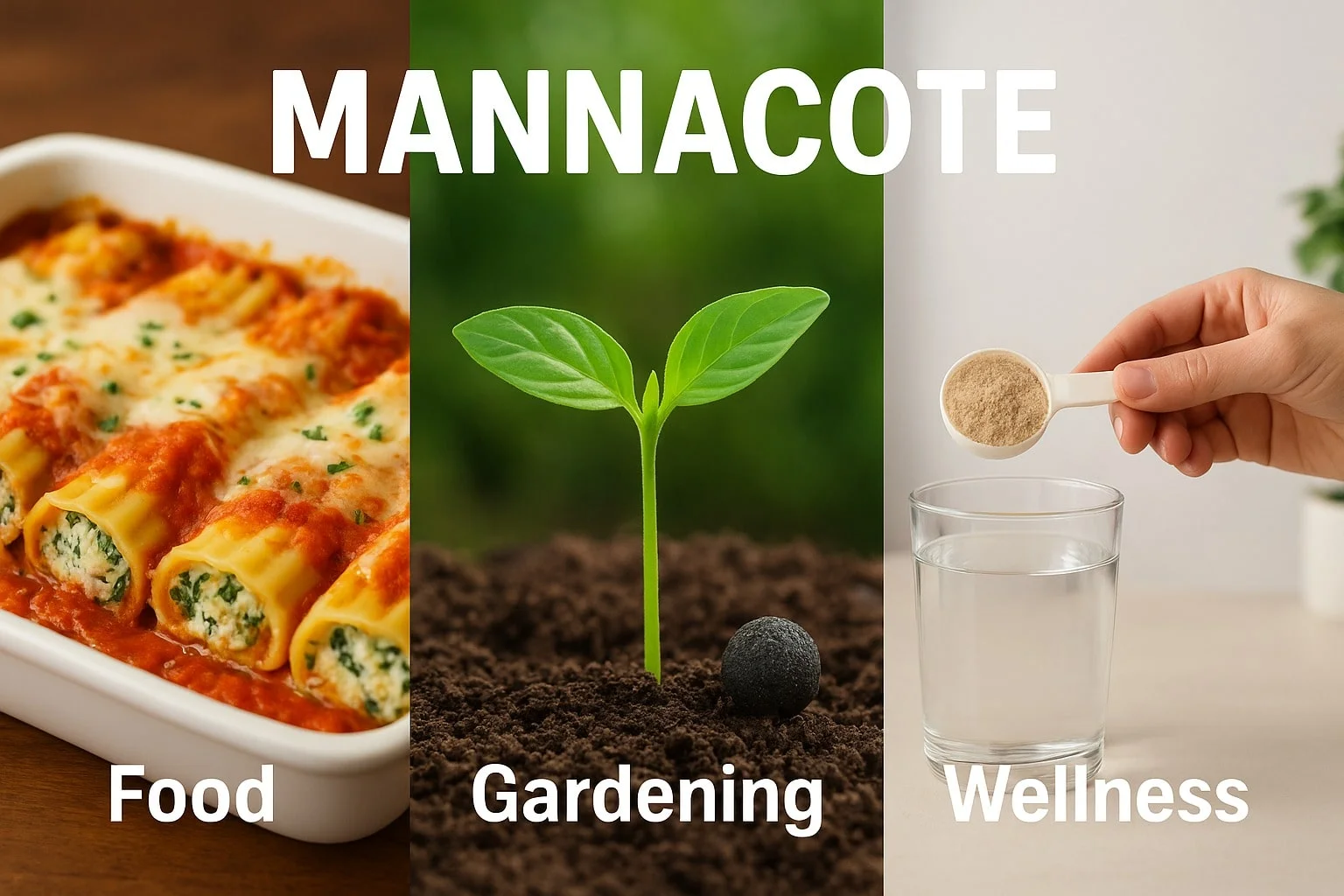Mannacote: Nature’s Ancient Sweet Secret for Modern Wellness
Forget the complicated superfoods that flood today’s market. While they come and go, the most powerful remedies are often those nature has been perfecting for millennia. Imagine a sweet, crystalline substance appearing like magic on trees and shrubs harvested for centuries by ancient healers, desert nomads, and wise herbalists. This isn’t a fantasy; it’s the fascinating story of Mannacote.
This natural exudate, often shrouded in mystery, bridges the gap between historical wisdom and modern wellness. Whether you’re curious about traditional remedies, exploring alternative sweeteners, or simply love a good natural story, Mannacote offers something intriguing. Let’s explore what it is, why it matters, and how you might bring this ancient treasure into your life.
So, What Exactly Is Mannacote? Beyond the Dew
Let’s clear something up right away: Mannacote isn’t morning dew or simple tree sap. It’s something far more special.
Mannacote is a natural sweet substance that exudes from certain plants like the Manna Ash (Fraxinus ornus) or specific desert shrubs in response to natural stress or insect activity. Think of it like the plant’s way of healing itself; when the bark is pierced or damaged, it secretes this thick, sugary resin that hardens into brittle, crystalline pieces. This isn’t a new discovery. References to “manna” appear in ancient texts, including the Bible, where it was described as a “food from heaven.” That sense of mystery and rarity still clings to Mannacote today.
But names can be tricky. You might hear Mannacote used interchangeably with “manna,” and while they’re related, they aren’t always identical. Manna is a broader term for these plant exudates, while Mannacote often refers to a purified or prepared form ideal for consumption. It’s like the difference between raw maple sap and the finished syrup you pour on pancakes.
So, what does it look and taste like? In its pure form, Mannacote often comes as pale, irregular chunks or a coarse powder. It has a mild, delicate sweetness—less intense than sugar with subtle notes of vanilla and a faint, earthy undertone. It dissolves easily in liquid, making it perfect for teas, tonics, and even culinary experiments.
A Treasure Trove of Goodness: Potential Mannacote Benefits
For generations, people haven’t valued Mannacote just for its unique taste. It earned its place in traditional medicine because of its gentle, supportive properties. While modern science is still catching up to ancient wisdom, the historical uses are compelling.
Here’s how Mannacote has been used:
- Gentle Digestive Support: This is its most celebrated benefit. Mannacote acts as a mild, natural laxative, making it especially useful for children or older adults who need a gentle solution. It works partly because it contains mannitol, a sugar alcohol that draws water into the intestines, softening stool and promoting comfortable digestion.
- Respiratory Comfort: Thanks to its demulcent qualities, Mannacote can soothe irritated mucous membranes in the throat and airways. Imagine it forming a calming film over a scratchy throat it’s been a go-to in traditional remedies for coughs and seasonal discomfort.
- A Prebiotic Powerhouse: Some forms of Mannacote contain complex sugars called oligosaccharides. These compounds act as prebiotics, meaning they serve as food for the beneficial bacteria in your gut. A healthy gut microbiome is linked to everything from improved immunity to better mood regulation.
- A Subtle Sweetener: Unlike refined sugar, Mannacote offers a more nuanced sweetness. For those looking to reduce their sugar intake without resorting to artificial options, it provides a natural, low-glycemic alternative.
It’s important to note that while anecdotal evidence and historical use are strong, more clinical studies would help solidify these benefits. Still, for many, Mannacote’s long history of use is a testament to its value.
From Tree to Table: How to Use Mannacote Today
You might be wondering how this ancient substance fits into a modern lifestyle. Surprisingly easily! Here’s how you can incorporate Mannacote into your daily routine.
First, sourcing matters. Look for Mannacote from reputable suppliers who prioritize purity and sustainability. It’s typically sold in three forms:
- Brittle, raw pieces
- A coarse, off-white powder
- A thick, syrupy concentrate
Once you have it, try these simple ideas:
- A Soothing Wellness Tonic: Dissolve a small piece (about the size of a pea) or half a teaspoon of the powder in a cup of warm water or herbal tea. Stir until it dissolves and enjoy its mild, sweet comfort. This is perfect before bed or first thing in the morning.
- A Culinary Experiment: Get creative in the kitchen! Use Mannacote to add a subtle sweetness to:
- Smoothies and shakes
- Homemade yogurt or oatmeal
- Salad dressings with a twist
- Energy balls and raw desserts
- The Traditional Way: Historically, people simply enjoyed letting a small piece dissolve slowly in their mouth. It’s a simple, effective way to experience its benefits.
Remember, a little goes a long way. Its mild laxative effect means you should start with a very small amount to see how your body responds.
Mannacote vs. Other Natural Sweeteners: How Does It Stack Up?
In a world full of sweeteners like honey, maple syrup, and stevia, Mannacote occupies a unique niche. It’s not just about sweetness it’s about function. The table below highlights how it compares:
| Sweetener | Source | Key Traits | Best Uses |
| Mannacote | Plant exudate | Mild sweetness, digestive support, demulcent | Wellness tonics, gentle remedies |
| Raw Honey | Bees | Rich flavor, antioxidants, antimicrobial | Teas, baking, natural immunity |
| Maple Syrup | Maple tree sap | Distinct taste, minerals like manganese | Pancakes, glazes, desserts |
| Stevia | Stevia plant | Zero-calorie, high-intensity sweetener | Low-calorie drinks, baking |
As you can see, Mannacote isn’t trying to compete with these options. Instead, it offers something different: functionality. It’s a sweetener that also supports well-being.
Important Considerations Before You Try Mannacote
As with any natural supplement, it’s essential to approach Mannacote with mindfulness and care.
- Start Low and Go Slow: Due to its laxative properties, begin with a very small amount. See how your body reacts over a day or two before gradually increasing if needed.
- Quality is Key: Always choose a high-quality, pure source to avoid contaminants. Look for organic or wildcrafted options from trusted vendors.
- Consult a Professional: If you are pregnant, nursing, taking medications, or have a chronic health condition (especially diabetes or digestive disorders), talk to your healthcare provider before using Mannacote.
- Listen to Your Body: Natural doesn’t always mean safe for everyone. If you experience any discomfort, simply stop using it.
Mannacote FAQs: Your Questions, Answered
What does Mannacote taste like?
It has a mild, delicate sweetness not as intense as sugar or honey—with subtle vanilla and woody undertones. It’s pleasant and not overpowering.
Is Mannacote safe for children?
Because of its gentle action, it has traditionally been used for children. However, always consult a pediatrician first and use only a tiny amount.
Where can I buy genuine Mannacote?
Reputable health food stores, specialty herbal apothecaries, and trusted online retailers are your best bet. Read reviews and choose suppliers who are transparent about their sourcing.
Can I use Mannacote if I’m diabetic?
Since it may affect blood sugar levels, it’s crucial to speak with your doctor before trying it.
A Timeless Natural Treasure
Mannacote is more than just a sweetener or a supplement it’s a reminder of the enduring power of nature. It connects us to ancient traditions and offers a gentle, functional option in our modern pursuit of wellness. Whether you’re seeking digestive support, a natural throat soother, or simply a unique ingredient to explore, Mannacote invites you to experience one of nature’s oldest kindnesses.














Post Comment